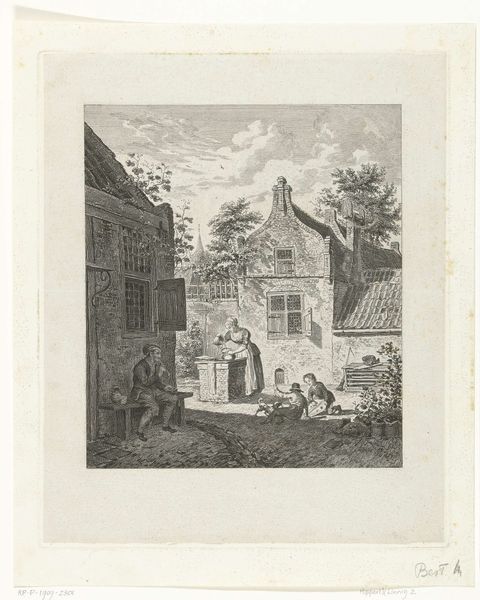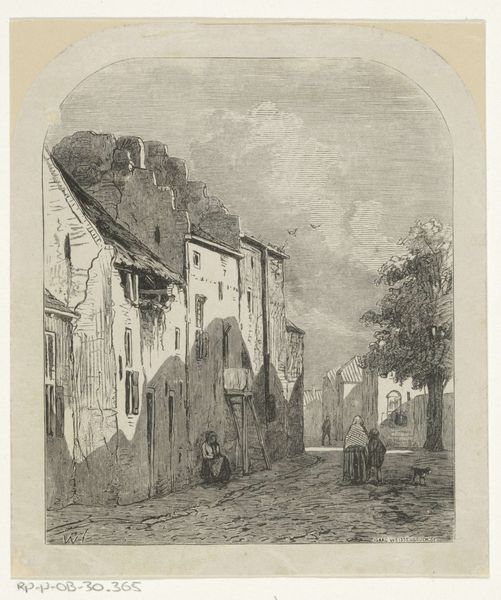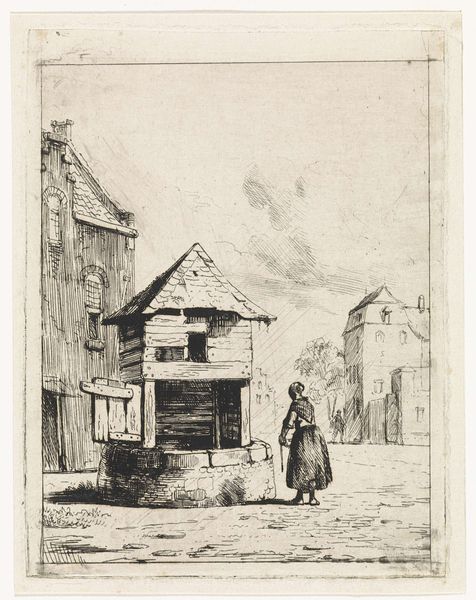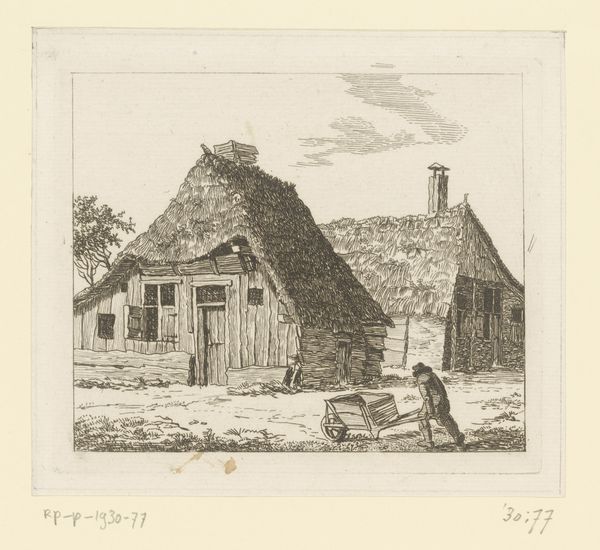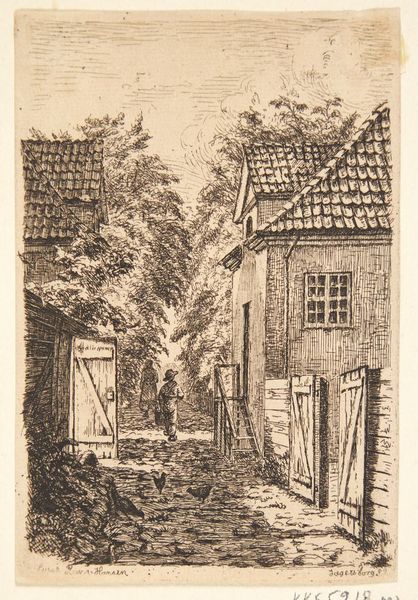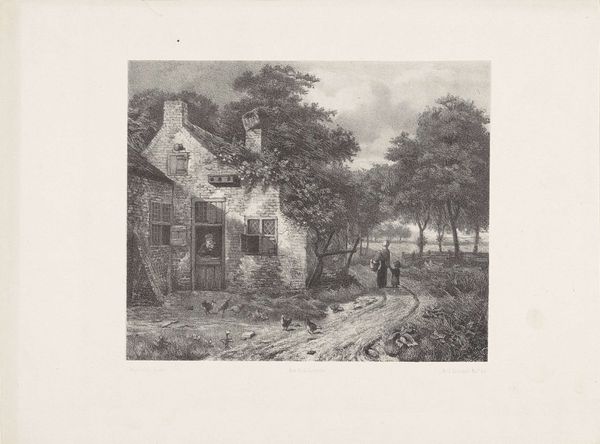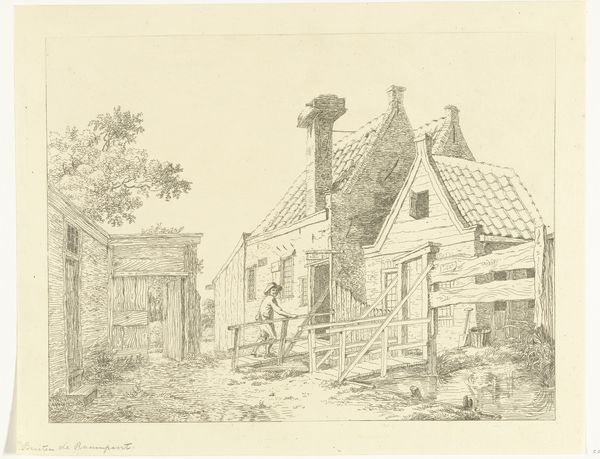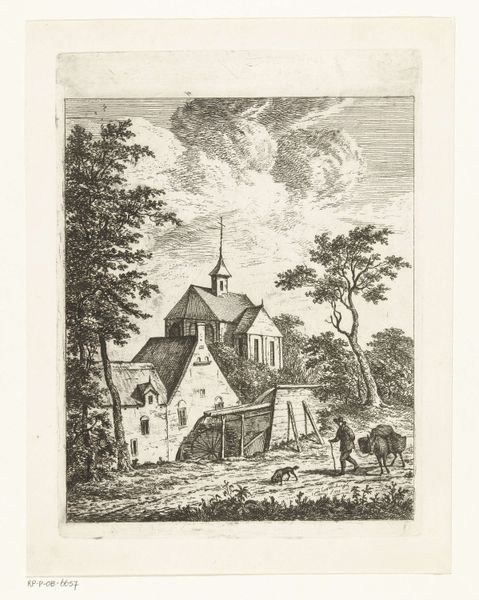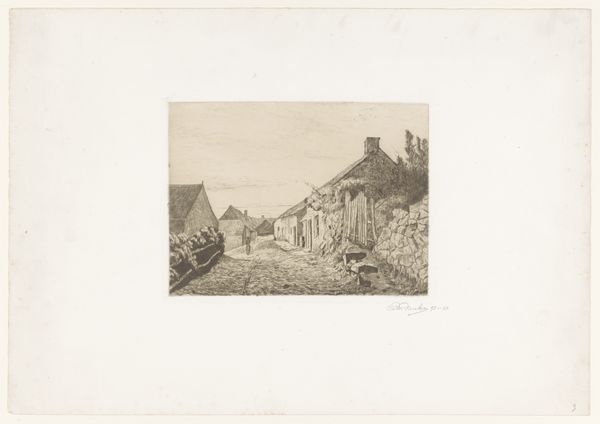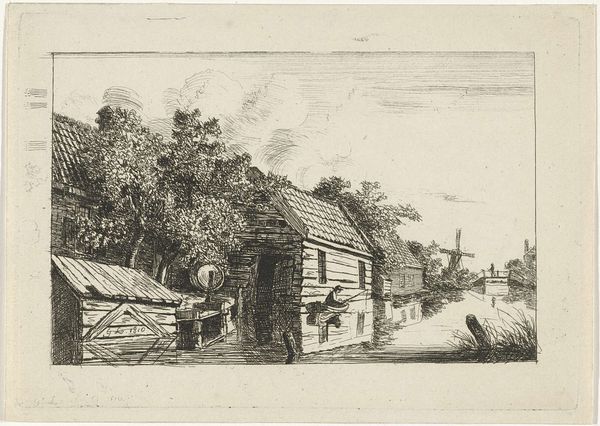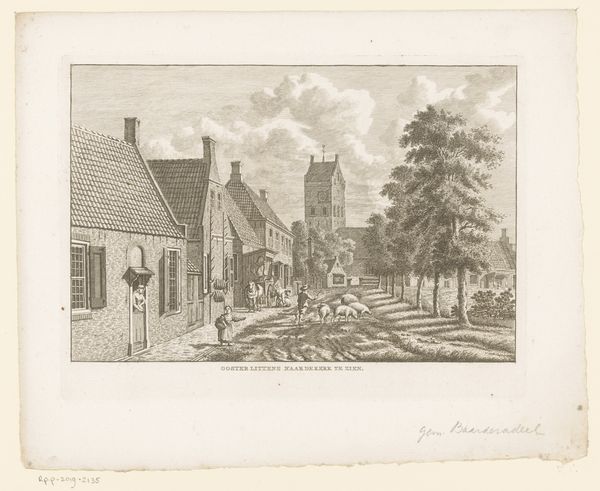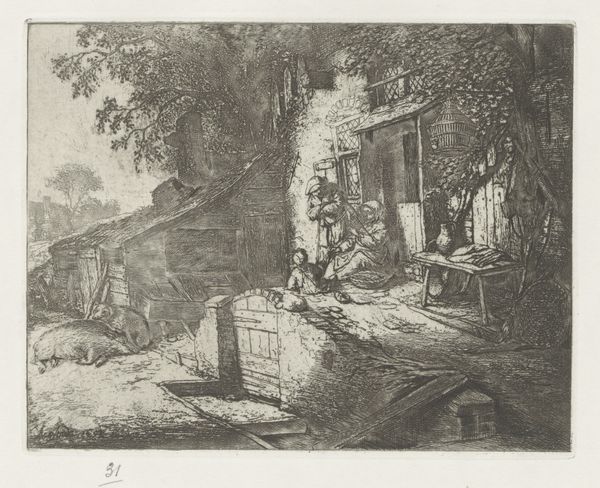
Binnenplaats met vrouw die trog vult bij hok van dier 1807 - 1855
0:00
0:00
drawing, print, etching, engraving
#
drawing
# print
#
etching
#
landscape
#
genre-painting
#
engraving
#
realism
Dimensions: height 241 mm, width 192 mm
Copyright: Rijks Museum: Open Domain
Editor: This is an etching, engraving, and drawing printed as one artwork titled "Binnenplaats met vrouw die trog vult bij hok van dier," made sometime between 1807 and 1855 by Johannes Alexander Rudolf Best. I notice it captures a quiet, domestic scene with remarkable detail, yet there's a palpable sense of labor. What stands out to you about this piece? Curator: I see this piece as a powerful commentary on the lives of women in the 19th century, specifically the intersection of their labor, their environment, and their social roles. Look at how the woman is positioned within the composition; she’s almost framed by the architecture and the animal's enclosure, isn’t she? Editor: Yes, almost confined by it. Curator: Exactly! Consider this in the context of burgeoning industrialization. While cities were changing rapidly, much of the population, especially women, remained tied to traditional, often arduous, forms of labor in more rural settings. The artwork prompts us to question, whose stories get told during periods of immense social and economic change, and who remains unseen? What power dynamics are at play when we look at this scene of labor? Editor: That's fascinating. I hadn't thought about it in terms of social commentary. So, by focusing on this seemingly mundane scene, the artist might actually be drawing attention to a larger societal structure? Curator: Precisely. This “genre painting," as it’s categorized, is more than just a snapshot of daily life. It uses realism to ask critical questions about gender, class, and the hidden labor that sustains society. It’s not just about what is depicted but about what it signifies within a broader political and historical framework. What did you notice about the animals place in this scene? Editor: They look very cramped in a tiny stall made out of simple, wooden boards. And I'm beginning to think it underscores a commentary on unseen or undervalued labor within a society undergoing significant transformations, but I had only been looking at the female subject until now. Curator: The beauty of art is how it offers a nuanced lens to view historical dynamics. Thank you, it's good to know the recording can help others see this image differently as well.
Comments
No comments
Be the first to comment and join the conversation on the ultimate creative platform.

